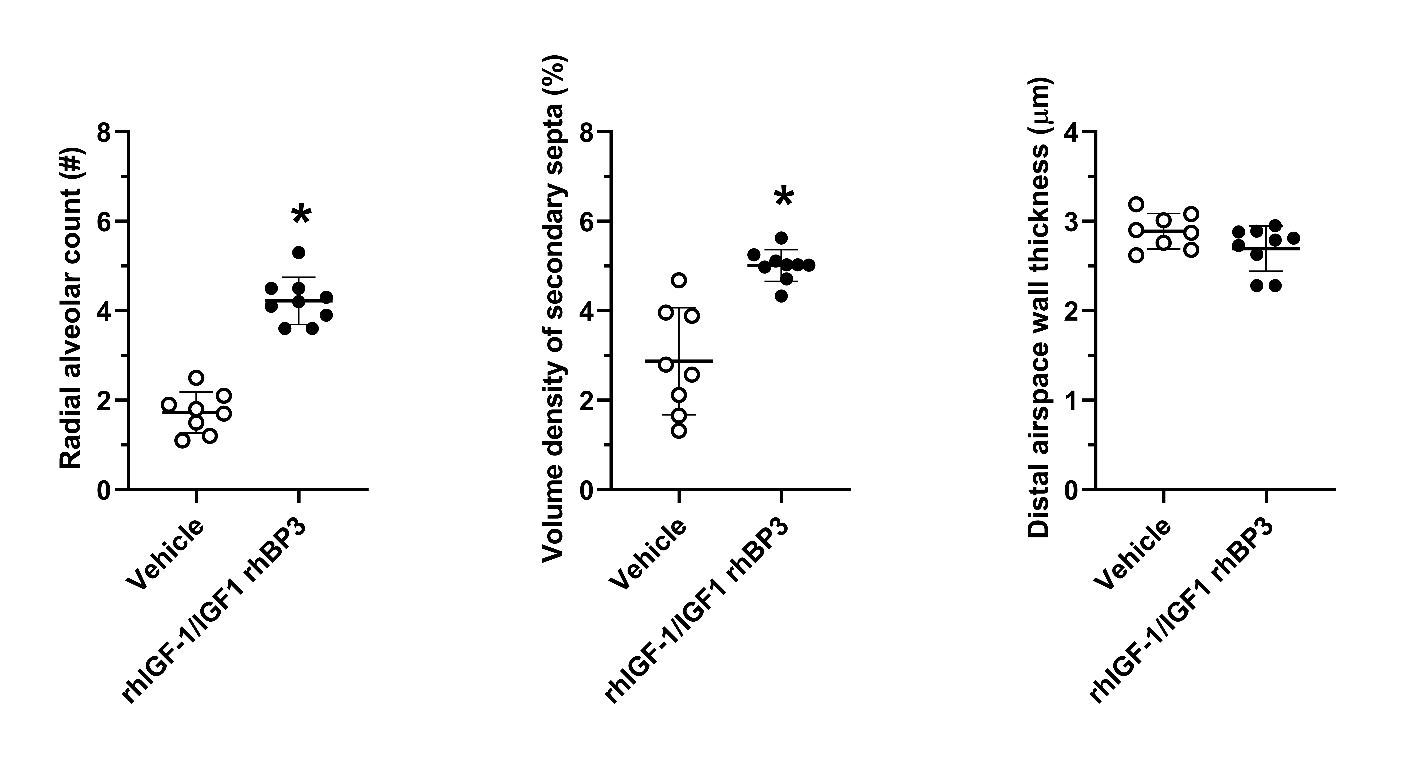Neonatal Pulmonology
Neonatal Pulmonology 1: Lung Development, Control of Breathing
239 - Continuous infusion of recombinant human insulin-like growth factor-1 (rhIGF-1) complex improves lung function and structure in mechanically ventilated preterm lambs
Publication Number: 239.339

Dallin Hubbard, MD, PhD
Neonatology Fellow
University of Utah
Salt Lake City, Utah, United States
Presenting Author(s)
Background:
Mechanically ventilated preterm infants are at risk of developing bronchopulmonary dysplasia (BPD), for which effective treatment is unavailable. Insulin-like growth factor 1 (IGF-1) is an important molecular player in normal lung development and low levels are implicated in the pathogenesis of BPD. Treatment with rhIGF-1 complex (rhIGF-1/IGF rh binding protein 3) was studied in a clinical trial and revealed a 53% reduction in severe BPD. Daily administration of rhIGF-1 complex to rat-pups for 14d preserved lung function and structure in models of BPD. Our recent pilot study determined optimal dose in preterm lambs (132d gestation; n=6) that were mechanically ventilated for 3d (Albertine, Pediatr Res 2022).
Objective:
We hypothesized that the optimized dose of rhIGF-1 complex will improve indices of cardiorespiratory function and alveolar formation after longer period of invasive mechanical ventilation (7d; n=9-10; 128d gestation) in preterm lambs.
Design/Methods:
Preterm lambs (~128d gestation; saccular stage of lung development) were divided into two groups that were mechanically ventilated for 7d. Group 1 had continuous infusion of saline (vehicle control, iv; n=8; 4F 4M). Group 2 had continuous infusion of rhIGF-1 complex (optimized dose 1.5 mg/Kg/d, iv; n=9; 4F 5M). Respiratory severity score (RSS), saturation/FiO2 (S/F) ratio, PaO2/FiO2 (P/F ratio), oxygenation index (OI), Arterial-alveolar oxygen (A-a) gradient, resistance (R), dynamic compliance (Cdyn), last 20% end expiratory compliance (20/Cdyn), and indices of alveolar formation were assessed. Plasma was analyzed for indices of liver and kidney function.
Results:
Physiological and morphological improvements occurred in the rhIGF-1 complex-treated group compared to the vehicle-treated group (Fig 1). The rhIGF-1 complex-treated group was easier to clinically manage. RSS, S/F and P/F ratios, OI, A-a gradient, radial alveolar count, and volume density of secondary septa, were statistically improved (*p≤0.05) in the IGF-1 complex-treated group. No statistical differences were detected for R, Cdyn, or 20/Cdyn. RhIGF-1 complex-treated preterm lambs had normal plasma clinical biochemistry for liver or kidney function compared to vehicle control.
Conclusion(s):
RhIGF-1 complex improved indices of respiratory gas exchange and alveolar formation. RhIGF-1 complex did not affect indices of liver or kidney function. RhIGF-1 complex is a promising molecule with potential therapeutic benefits, including protecting preterm infants at risk of developing BPD..png)

